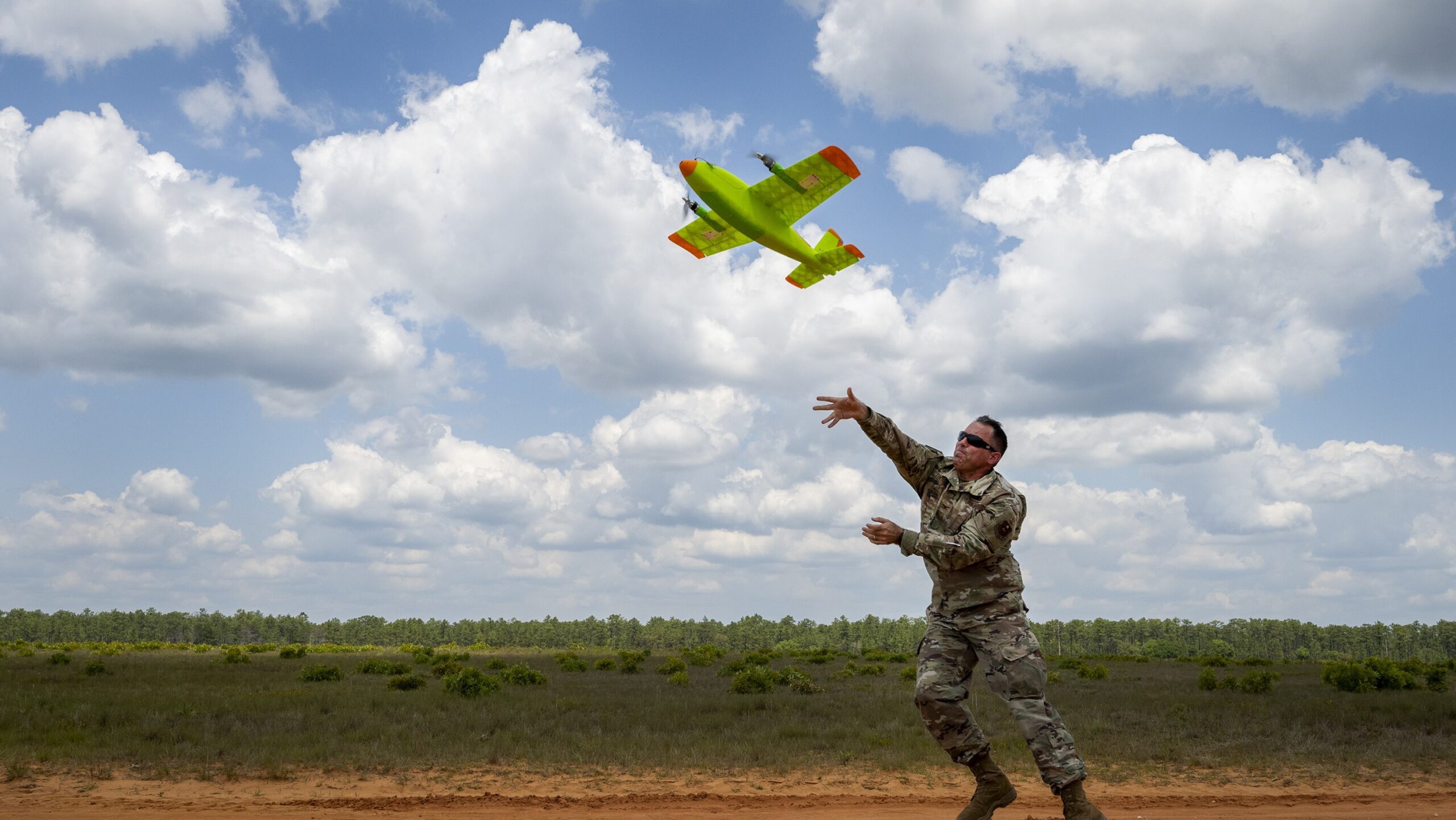

After hours of planning and design work, a team of Air Force officers and aerospace technology designers put the last pieces of an 8 lb. drone together. The uncrewed aerial system, which looked like a miniature prop plane, was then picked up and launched into the sky, taking flight. The team had planned, assembled and flown a new drone in less than a full day’s time.
It was a major achievement and the payoff for months of work from the team. The team members are Blue Horizons fellows. Blue Horizons is essentially an Air Force think tank program meant to allow its fellows to test and design new technologies meant to help further the Air Force’s capabilities. They were one of five teams working on a year-long fellowship. The Air Force officers worked with aerospace company Titan Dynamics to help with the process.
The team members outlined the parameters and specific functions they needed, then used software from Titan to design the UAS, which took as little as 10 minutes. The pieces were then crafted with a 3D printer, assembled and tested.
Subscribe to Task & Purpose Today. Get the latest military news and culture in your inbox daily.
It’s an impressive feat on its own, but also a sign of just how quickly the Black Phoenix team has improved their skills. A month prior the team was reporting it had the ability to design, build and launch a new UAS in under 48 hours. In only a few weeks the members have essentially halved that. Those earlier tests were done in the Middle East as part of U.S. Air Force Central’s Task Force 99. After that wrapped the Black Phoenix team went to Eglin Air Force Base in Florida for a week of new tests based on their findings.
“Small UASs are becoming a new warfighting capability,” Col. Dustin Thomas, a member of the Black Phoenix team, said in an Air Force release on the achievement. “However, the Air Force can’t rapidly change these aircraft based on the threat environment or quickly use new technologies to meet the needs of a specific mission. Our project aims to find ways to change that.”
The tests at Eglin were the last part of their research. The Black Phoenix team will present its findings to Air Force leadership this month.
Given the rapid development of drones, as well as their increasingly common deployment on the battlefield, the different U.S. military branches are looking at ways to field their own. “Historically, the Air Force is relatively slow in adapting and testing these technologies,” Thomas noted, but the team’s project is one example of the many different ways the military is working to build out a network or force of cheap, easy-to-make drones (the U.S. military is also looking for cheaper ways to take out enemy drones).
The Black Phoenix team ultimately tested six different UAS made using the same methods, each designed for a different purpose. Several test flights resulted in crashes, but the team members found that only the outer parts of the drones were damaged. It cost only as much as $50 to replace and redeploy the aircraft.
“We’ve taken big risks this week in flying so many new aircraft for the first time, but the risk is also low because these entire aircraft are built from commercial off-the-shelf items, so the financial investment is small,” Lt. Col. Peter Dyrud, part of the Black Phoenix team, said.
The latest on Task & Purpose
- Army captain gives up his rank to enlist in the Marine Corps
- Army fires commander of Germany-based air defense unit
- Navy offers some sailors $100,000 to reenlist
- Army general bans most work texts after duty day
- Air National Guard officer and state senator arrested for burglary